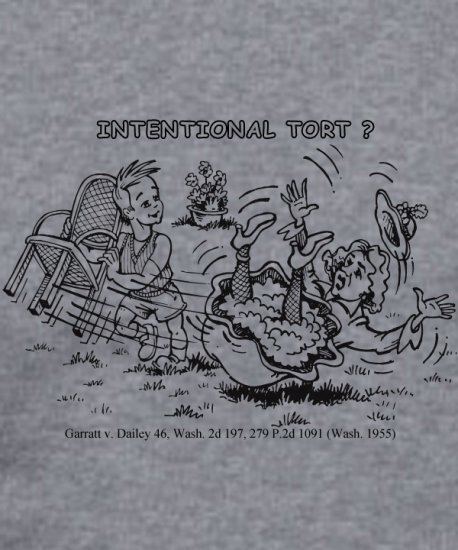 | ||
Similar Brown v Kendall, Vosburg v Putney, Summers v Tice, United States v Carroll To, Vaughan v Menlove | ||
Garratt v. Dailey, 46 Wash. 2d 197, 279 P.2d 1091 (Wash. 1955) is a famous tort law case that illustrates the principle of "intent" for intentional torts.
Contents
Background
Dailey, a 5 years, 9 months boy, moved a lawn chair that he believed Ruth Garratt was going to sit down in. When she did, she fell, sustaining injuries. Garratt brought an action against the child for battery.
The trial judge found in favor of Dailey stating that there was no intent to harm the old lady. Garratt appealed to the Washington Supreme Court.
The issue before the Court was whether a lack of intent to cause harm precludes a battery charge.
Ruling
Relying on the definition of battery from the Restatement of Torts, the Court held that battery could only be found if it is shown that the boy knew with "substantial certainty" that by moving the chair Garratt would attempt to sit in the chair's original position. That is, the accused must be substantially certain that his action would cause the offensive contact. The absence of an intent to injure or play a joke is not sufficient to absolve the accused of liability. It is necessary for the plaintiff only to prove that the accused had sufficient knowledge to foresee the contact with "substantial certainty".
The Court, noting that a new trial was unnecessary, remanded the case back to the trial court for clarification of the boy's knowledge at the time. Subsequently, the trial Court found in favor of Garratt and was affirmed by the state Supreme Court.
